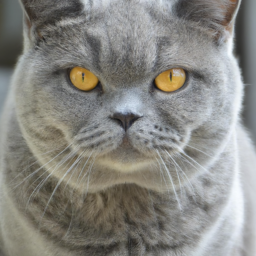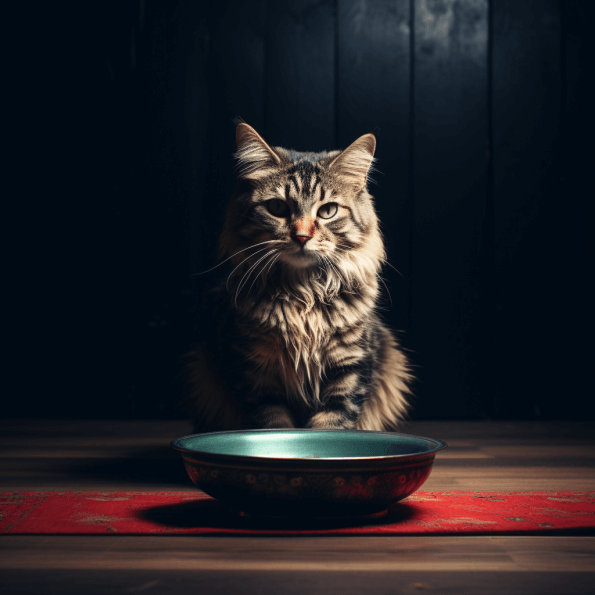How Do Cats Purr?
Have you ever found yourself wide-eyed, simply fascinated by how cats purr? It’s a comforting sound, and albeit very common, the science behind it might be a mystery to you. Your loving kitty has this unique biology―it’s their vocal cords, special extra tissues, and their brain that works in a fully coordinated manner to create this remarkable sound.
As you stroke your kitty and they start to purr, it strikes a soothing feeling. But how does it actually occur? Well, as the feline takes in breaths of air, the airflow hits the vocal cord tissues causing them to vibrate, and voila! That familiar, comforting lull crawls into your ears. But, did you know that cats can also turn on their purr voluntarily? Their brain tells the vocal cords when to perform the purr action. Isn’t that fascinating?
Understanding the Unique Cat Purr
Sitting with a purring cat curled up on your lap is undoubtedly one of life’s great pleasures. But have you ever wondered why cats purr and what makes this unique sound?
Definition of Cat Purr
A cat’s purr is a distinctive, rhythmic sound that cats produce in a variety of situations. It’s a form of communication, primarily used when a cat is relaxed. But the repertoire of the purr is multifaceted, as it can also be a means of expressing other emotions or conditions.
Why it’s Unique to Cats
While some animals may produce sounds that are reminiscent of a cat’s purr, it’s certainly a unique phenomenon. Understanding its uniqueness can be traced back to anatomical explanations particular to a cat’s physiology.
The Anatomical Explanation of Cat Purring
You might ask, “how do cats purr?” It’s actually tied up with the animal’s unique anatomy.
The Role of the Cat’s Larynx
The main culprit in producing these sounds is the larynx, or the voice box. When a cat purrs, signals from their brain cause the laryngeal muscles to tighten. This causes a narrowing of the opening between the vocal cords, which, when the cat breathes in and out, results in the distinctive purring sound.
How the Central Nervous System Contributes
Also contributing to the purr is the cat’s central nervous system. This regulates and coordinates the activity of the laryngeal muscles, controlling the opening and closing of the glottis with the cat’s respiratory rate, resulting in the rhythmic purr that brings comfort on a cold winter night.

Frequency and Sound of Cat Purrs
Listening for Purrs
A cat’s purr usually has a low, rumbling frequency, often described as a “buzzing” or “humming” sound. It can range from very soft and barely perceptible to rather loud and robust, depending on the cat and its mood.
Variations Between Different Cats
This frequency and sound can vary significantly between different cats. Some cats have high-pitched, gentle purrs, while others may have a deeper, more resonant purr. It really depends on the individual cat’s unique voice box and personal sound!
Circumstances that Trigger Cat Purrs
Purring During Relaxation
We often associate a cat’s purr with contentment and relaxation, like when they’re enjoying a well-deserved petting session or lounging in a sunbeam. But this is not the only trigger for this fascinating vocalization.
Purrs When Seeking Attention
Cats also use purring as a strategy to get your attention. A cat might purr to persuade you to continue petting them or to convince you to give them a tasty treat.
Anguish and Discomfort Purrs
Contrary to popular belief, cats can also purr when they are distressed or in pain. This type of purring can be a cat’s way of comforting themselves and soliciting help and attention from their human companions.

Interpreting the Emotional Meaning Behind Cat Purrs
Association with Contentment
It’s commonly agreed upon that a purring cat is a content cat. Generally, when a cat’s needs are met, and they feel safe and secure in their environment, purring is a sign of satisfaction and positive emotions.
Signs of Stress or Pressure
On the other hand, if a cat purrs while showing other signs of stress or discomfort, like avoiding eye contact or hissing, it might be a signal that the cat is anxious or under the weather. Observing the wider context of your cat’s behavior in conjunction with purring can give you a more accurate picture of their emotional state.
Health Benefits of Cat Purrs
Healing Properties of Purring
Research has suggested that the vibrations from purring can speed up the healing process in cats. This might explain why some cats purr when they’re in pain or recovering from an injury.
How Purring Affects Human Health
For humans, listening to a cat purring can have a calming and therapeutic effect. It can help lower stress levels, reduce blood pressure, and promote healing. Who knew that your feline friend could be such a great companion in the journey of well-being?
Purring Patterns in Kittens
How Kittens Start to Purr
Kittens start purring within a few days of being born. This early purring is a way for the kittens to communicate with their mother, especially when they need to suckle.
Communication Between Mother and Kittens
Cat mothers will also purr while nursing, creating a cycle of communication between them and their kittens. This purring pattern establishes trust and a strong bond between the mother cat and her babies.
Purring in Domestic Cats vs. Wild Cats
Similarities in Purring
Big cats, like lions and tigers, are technically capable of purring, but it’s not quite the same as the purr of a domestic cat.
Differences Between Domestic and Wild Cats
Wild cats typically purr only on the exhale, while our domesticated feline friends can purr continuously as they breathe, both in and out. Furthermore, the tone and volume of wild cat purrs also tend to differ significantly from those of domestic cats.
How Veterinarians Use Purring to Assess Cat Health
Purring as a Sign of Illness
Veterinarians listen to a cat’s purr as part of their examination. As mentioned earlier, cats can purr when they’re unwell or in pain, so a change in the sound or frequency of a cat’s purr can potentially hint at health problems.
Diagnostic Use of Purring
Moreover, a purr can mask heart or breathing problems. If a cat purrs during an examination, vets might need to distract the cat to stop the purring, ensuring an accurate and comprehensive check-up.
Interesting Facts About Cat Purrs
Unusual Purring Behaviors
Some cats will purr when they’re about to fall asleep, while others will purr throughout their sleep. Some cats even purr when they play!
Myths and Misconceptions About Cat Purring
There are many myths and misconceptions about cat purring. For example, some people believe that only domestic cats can purr, which, as we have already discussed, isn’t strictly accurate.
In closing, the humble cat purr, endearing as it is, has complexity and nuances that are fascinating once you uncoil them. Understanding your cat’s purr is a step closer to understanding the mysterious, amusing, and adorable world of your feline friend. Now, you’re ready to tune into the language of purring with a newer, more insightful perspective!







